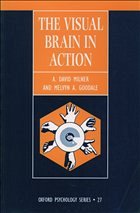Although the mechanics of how the eye works are well understood, debate still exists as to how the complex machinery of the brain interprets the neural impulses supplied by the eye. The authors of this book take a step back and ask, 'What is the function of vision?' in an attempt to understand its evolutionary origins and how these origins have shaped the organization of the human visual system. The main thesis of the book is that the neural machinery mediating our visual experience of the world is quite distinct from that mediating the visual control of motor behaviour. Topics covered range from the organization of visual pathways in the monkey to the role of consciousness in visual processing. Considerable attention is given to interpreting the visual defects seen in neurological patients with damage to different parts of the visual systems. The book will appeal to students, researchers, and practitioners in a number of different disciplines interested in vision and visual problems.
Although the mechanics of how the eye works are well understood, debate still exists as to how the complex machinery of the brain interprets neural impulses supplied by the eye. The authors of this book take a step back to ask, "What is the function of vision?" in an attempt to understand the evolutionary origins and therefore functions of the visual system. They propose that not one, but two "visual brains" exist which are responsible in a quasi-independent way for visual perception and the visual control of action.
Although the mechanics of how the eye works are well understood, debate still exists as to how the complex machinery of the brain interprets neural impulses supplied by the eye. The authors of this book take a step back to ask, "What is the function of vision?" in an attempt to understand the evolutionary origins and therefore functions of the visual system. They propose that not one, but two "visual brains" exist which are responsible in a quasi-independent way for visual perception and the visual control of action.
